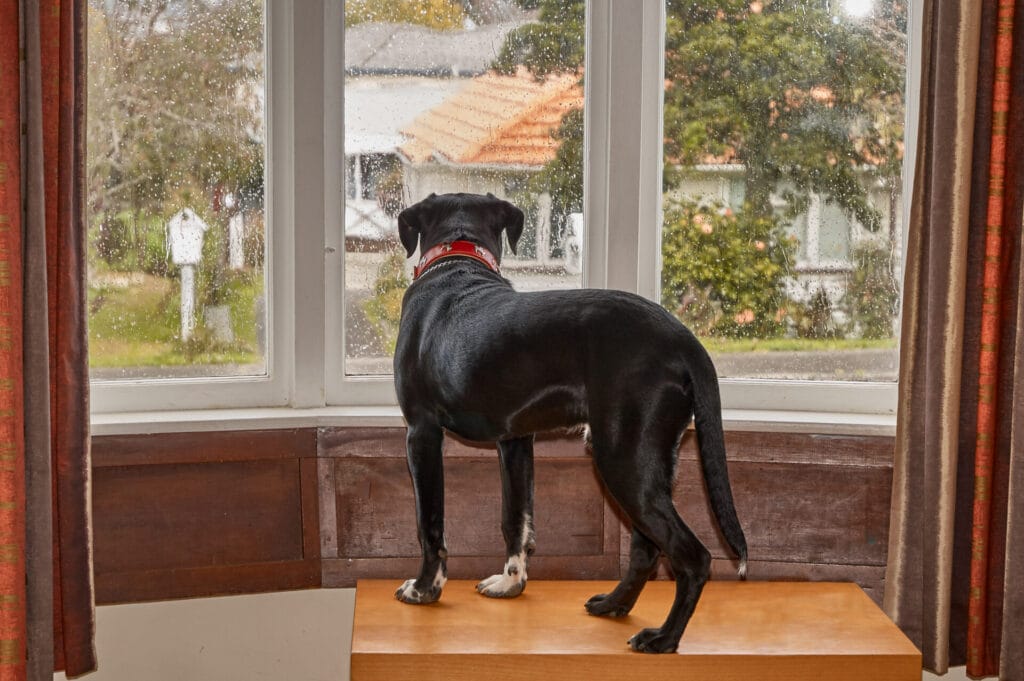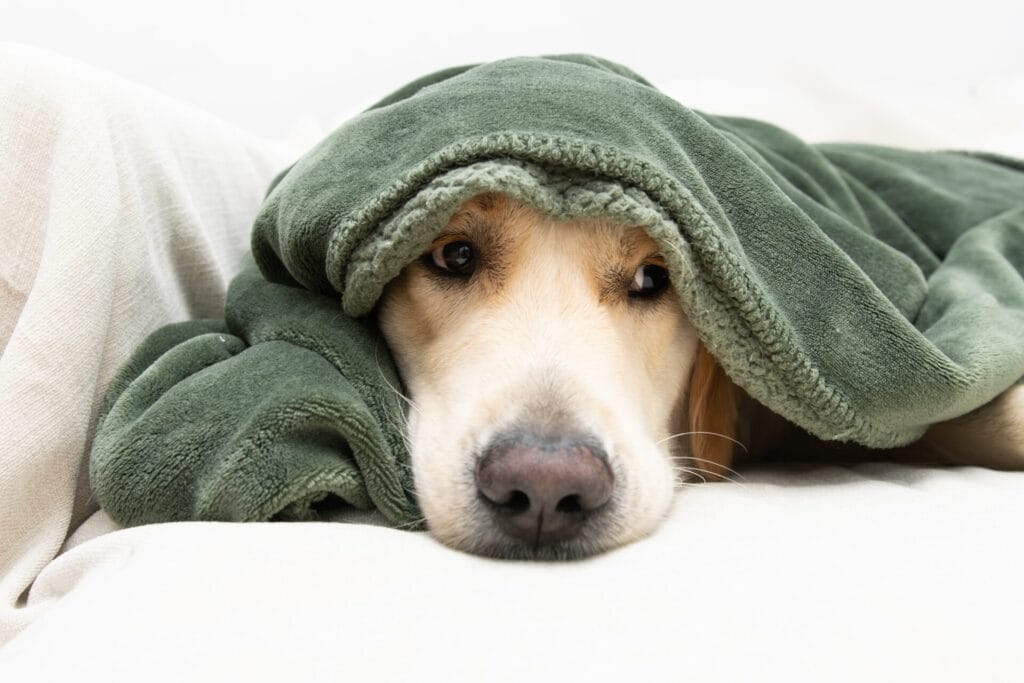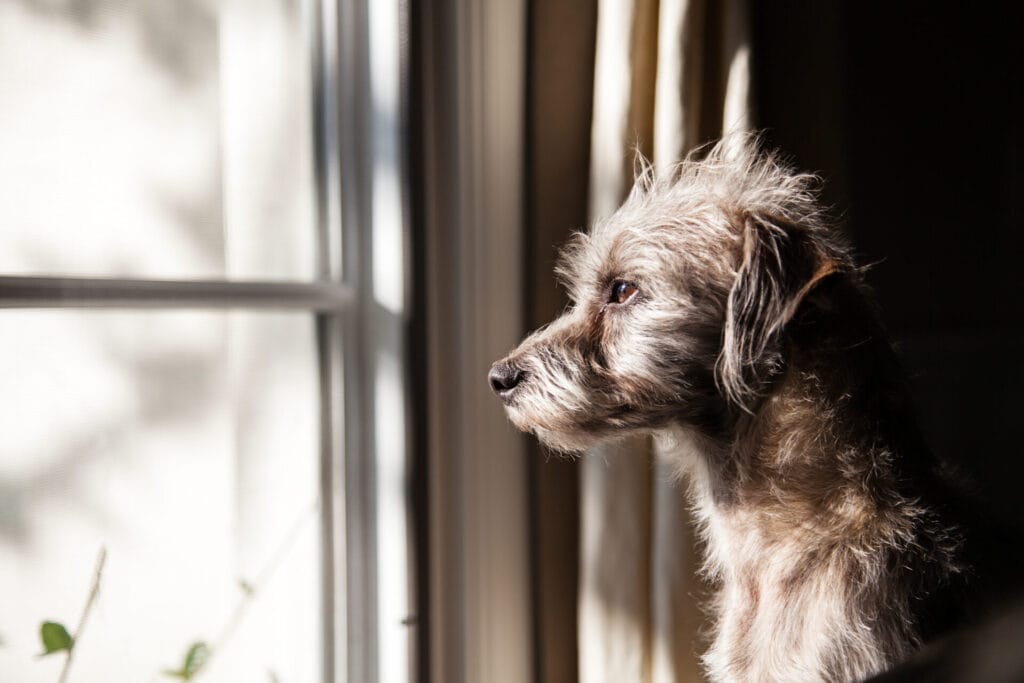Learn how to deal with separation anxiety in dogs. Separation anxiety in dogs is a common but challenging behavior problem that affects both dogs and dog owners too. Many dogs experience home-alone problems or have isolation distress. If your dog is happy with other people but isn’t comfortable being alone, separation anxiety may be the cause.
In this article, you’ll learn common signs of separation anxiety in dogs. We’ll also share tips & tricks to deal with separation anxiety. And we’ll answer whether or not separation anxiety can be cured quickly.
How to tell if your dog has separation anxiety
Dogs communicate a lot about their feelings via their body language and vocalization. Pay close attention to what happens when your dog experiences alone time.
Typical signs of separation anxiety or your dog being uncomfortable about being home alone include:
- Panting and breathing fast
- Pacing and restlessness
- Destructive behavior – chewing, scratching, or digging when left
- Escape attempts – pawing and scratching excessively at doors or exit points
- Vocalization – ranges from whining to crying, barking, and howling
- Anxiety or panic when you get ready to leave
- Lack of appetite or unwillingness to eat
For separation anxiety, these behaviors must occur when you’re not at home. If they happen when you’re at home, too, then your dog likely experiences a different form of anxiety. Identify what triggers that behavior, so you can help your dog feel happier.

How to deal with separation anxiety in dogs
Fixing dog separation anxiety is a process that, like many other behavior problems, we deal with by removing stressors. First and foremost, ensure you dog tolerates the duration they’re left alone. Other steps to deal with the behavior include the following:
- Ensure your dog’s needs are met.
Dogs need a nutritious and balanced diet and appropriate physical and mental exercise levels for their well-being. Audit to ensure your dog’s needs are met; some problems result from boredom, bad diet, or lack of exercise.
- What happens when you’re gone?
Watch your dog while you’re out via a pet camera or tablet. If you see signs of separation anxiety, note how quickly your dog became anxious after you left. Record specific triggers like keys or shoes that set your dog off.
- Create a separation anxiety training plan.
A separation anxiety training plan uses gradual exposure to desensitize your dog to your leaving. Essentially, we want “leaving” to be no big deal; your dog’s reaction should be boredom.
- Start below your dog’s stress threshold.
Your dog must feel safe and comfortable, so practice short departures where your dog isn’t bothered by your comings and goings. Remove reasonable triggers (e.g. put keys in your pocket and your shoes on ahead of time).
- Regular training sessions.
Desensitization takes time and practice to change your dog’s feelings about alone-time. Try structured leaving (for short durations) for five days a week.
- Speak to your Veterinarian for medication advice.
Medicine is also an option for many dogs, so discuss this with your Veterinarian. A professional dog separation anxiety trainer helps implement a behavior modification plan, as drugs won’t work alone.

Is there any way of curing dog separation anxiety quickly?
Separation anxiety treatment can take a while, depending on the dog, but it is fixable with desensitization. Another option: consult a professional separation anxiety dog trainer like a Malena De Martini’s Certified Separation Anxiety Trainers (CSATs). These trainers can create a behavior modification plan. It’s a real hand-holding experience and you’ll get the support you need.
What else will help my dog’s separation anxiety?
The best thing you can do? Don’t leave your dog longer than they can handle. Solutions might involve getting a pet sitter, your dog attending daycare, or asking family or friends to help.
Alongside training, people have found success with some of the following options which can be especially helpful for dogs experiencing lighter boredom or angst!
- Creating a safe space and leaving an old shirt with your scent behind
- Providing kongs and stuffed puzzle toys
- Playing white noise or music to promote relaxation
- Using calming aromatherapy oils
- Trying CBD dog products or calming supplements
- Using natural supplements and pheromone products
Separation anxiety in dogs can be a challenging issue to deal with. However, with patience, consistency, and the proper techniques, your dog can learn to be more comfortable and relaxed when you’re not around.
Seeking professional advice, establish a routine of training your dog, provide plenty of exercise and mental stimulation, and consider products that may help reduce anxiety. With time and effort, you’ll help your pup overcome separation anxiety and enjoy a happier, more relaxed life.




















